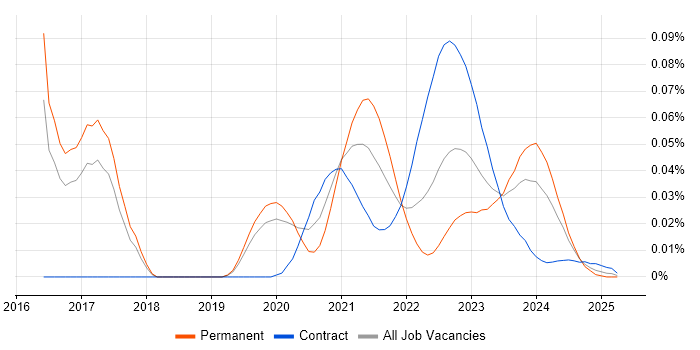Java Developer - Low Latency
UK > Work from Home
As of 9 May 2025, there is not enough information available from job vacancies posted within the last 6 months to determine the median Java Developer - Low Latency salary in Work from Home.
| 6 months to 9 May 2025 |
Same period 2024 | Same period 2023 | |
|---|---|---|---|
| Rank | - | 565 | 644 |
| Rank change year-on-year | - | +79 | +190 |
| Permanent jobs requiring a Low Latency Java Developer | 0 | 24 | 17 |
| As % of all permanent jobs with a WFH option | - | 0.071% | 0.041% |
| As % of the Job Titles category | - | 0.074% | 0.043% |
| Number of salaries quoted | 0 | 12 | 17 |
| 10th Percentile | - | £72,500 | £86,750 |
| 25th Percentile | - | £96,875 | £88,750 |
| Median annual salary (50th Percentile) | - | £142,500 | £92,500 |
| Median % change year-on-year | - | +54.05% | -15.91% |
| 75th Percentile | - | £146,250 | £105,000 |
| 90th Percentile | - | - | £115,000 |
| UK median annual salary | £90,000 | £142,500 | £110,000 |
| % change year-on-year | -36.84% | +29.55% | - |
All Permanent IT Job Vacancies
Work from Home
For comparison with the information above, the following table provides summary statistics for all permanent IT job vacancies with WFH or hybrid options. Most job vacancies include a discernible job title that can be normalized. As such, the figures in the second row provide an indication of the number of permanent jobs in our overall sample.
| Permanent vacancies in Work from Home with a recognized job title | 15,104 | 32,408 | 39,814 |
| % of permanent jobs with a recognized job title | 90.89% | 95.97% | 96.00% |
| Number of salaries quoted | 9,947 | 24,891 | 28,284 |
| 10th Percentile | £29,750 | £33,127 | £36,750 |
| 25th Percentile | £42,500 | £42,500 | £47,375 |
| Median annual salary (50th Percentile) | £58,000 | £56,000 | £62,500 |
| Median % change year-on-year | +3.57% | -10.40% | +4.17% |
| 75th Percentile | £77,500 | £75,000 | £81,250 |
| 90th Percentile | £100,000 | £93,750 | £100,000 |
| UK median annual salary | £57,500 | £52,500 | £60,000 |
| % change year-on-year | +9.52% | -12.50% | - |
Low Latency Java Developer
Trend for Jobs with a WFH Option
Job vacancies with remote working options which featured Low Latency Java Developer in the job title as a proportion of all IT jobs advertised.

Low Latency Java Developer
Salary Trend for Jobs with a WFH Option
3-month moving average salary quoted in job vacancies with remote working options citing Low Latency Java Developer.
